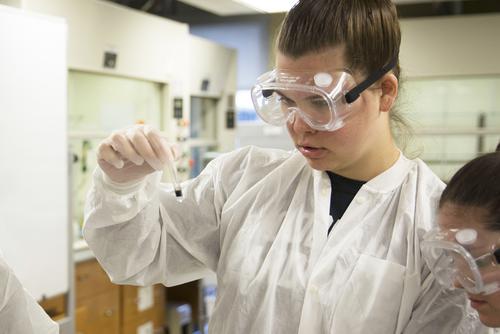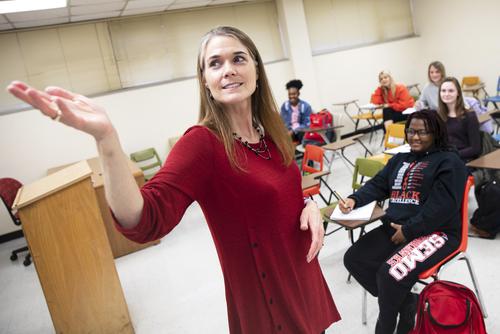Strategic Action Plan
Continue to main contentThe Strategic Action Plan affords us an opportunity to work innovatively and energetically together to take control of our future.
Strategic Action Plan / 2022-2025
-
Outcome 1
Educate students to succeed and make positive impacts in their communities. Actions & Goals -
Outcome 2
Stabilize Southeast's enrollment and graduate a diverse community of learners. Actions & Goals -
Outcome 3
Enhance stewardship of Southeast's resources and promote a culture of belonging, respect, and continuous improvement. Actions & Goals
Strategic Action Plan Resources
Outcome 1 / Educate students to succeed and make positive impacts in their communities
Goals and Actions
1) Improve academic programs continuously.
- Recruit and retain qualified, diverse, and culturally-competent faculty and staff.
- Develop and enhance unit-level diversity and inclusive excellence plans.
- Provide and support equitable opportunities for faculty and staff, allowing for appropriate career progression.
- Showcase current national accreditations and achieve national accreditations for programs when appropriate.
- Integrate career exploration, career readiness, and experiential learning opportunities into academic programs.
- Increase faculty-student mentoring opportunities.
- Teach a multicultural, inclusive, and equitable curriculum.
2) Support a range of opportunities for engagement, skill development and persistence for all students.
- Expand academic, community, and alumni partnerships that provide valuable experiential learning opportunities.
- Support faculty and student research and creative endeavors.
- Increase multicultural and international collaborative activities.
- Ensure a holistic education, leading to essential skill development and proficiency.
- Promote engaging and healthy student life experiences.
- Increase academic support in foundational courses.
3) Increase the number of degrees and certificates awarded students.
- Develop and strengthen student degree completion pathways and transfer partnerships.
- Enhance flexible modes of instructional delivery for student coursework engagement.
- Increase the accessibility of credit for prior learning.
- Expand certificate, bachelor, master, and accelerated degree options.
- Provide both in-person and virtual access to program-related software, hardware, laboratories, equipment, instructional materials, advising, and academic support.
4) Align curricula with areas of employer demand and embed industry recognized credentials throughout.
- Build academic programs to meet existing, traditional, nontraditional, and emerging employment opportunities.
- Emphasize to students, parents, and employers the value and potential of Southeast’s academic programs for post-graduation success.
Outcome 2 / Stabilize Southeast's enrollment and graduate a diverse community of learners.
Goals and Actions
1) Reduce equity gaps and improve overall student persistence and completion.
- Improve the onboarding and professional development of faculty and staff to optimize academic and business processes.
- Strengthen the transition from professional to departmental advising.
- Increase faculty and staff student mentoring opportunities to enhance student success.
- Enhance support for students navigating university academic and business processes and reduce barriers to student success.
- Promote student participation in university cocurricular activities (honors program, arts, athletics, Greek life, leadership programs, residential learning communities, study abroad, student organizations, and student employment).
- Improve relationships with current students through enhanced communication.
- Utilize early alert protocols and systems to provide timely intervention with students who need assistance.
2) Increase enrollment of historically underrepresented racial and ethnic groups, Pell-eligible students, and first-generation college students.
- Identify and break down barriers to admissions and enrollment.
- Promote opportunities that foster community inclusiveness
- Expand pre-enrollment and summer programs for historically underrepresented student groups.
3) Maintain enrollment market share for domestic undergraduate new, first-time, and transfer students.
- Increase partnerships with community-based organizations, business and industry, school districts, and alumni to engage prospective students and their families.
- Evaluate the impact of Southeast’s pricing and discounting strategies on new student enrollment and annual student retention.
- Leverage Southeast’s brand identity and the value of a Southeast degree.
- Develop community college partnerships, including Transfer Mentor Program partners and articulation agreements.
4) Increase enrollment of graduate and international students.
- Assess Southeast’s position and share of enrolled students in relation to key competitors for each student population.
- Deploy an integrated marketing, advertising, and recruitment strategy.
Outcome 3 / Enhance stewardship of Southeast's resources and promote a culture of belonging, respect, and continuous improvement.
Goals and Actions
1) Improve the recruitment and retention of faculty and staff.
- Increase flexible work opportunities.
- Implement the remaining salary increases as detailed in the salary equity study.
2) Enhance the transparency of the University’s budgeting process
- Revise the structure and work of the Budget Review Committee.
3) Enhance and diversify revenue streams through internal cost efficiencies and partnerships with business and industry, other institutions, alumni, and donors.
- Pursue partnerships that extend the University’s financial reach.
- Build alumni and philanthropic engagement.
- Review institutional scholarship practices to maximize net tuition revenues.
4) Prioritize critical facilities and infrastructure investments.
- Create tools and processes to identify the University’s highest priority facility needs./ Create a work group to improve academic and centralized scheduling and enhance campus space utilization.
- Develop a roadmap for promoting and operating a healthier and more sustainable campus and begin investing in sustainability projects with strong financial and energy savings returns.
- Enhance the University’s aesthetic and visual appeal through continued campus beautification.
5) Enhance Southeast’s information management systems and processes to meet needs for security, flexibility, program effectiveness, and efficiency of operations.
- Create tools and processes to identify and assess the University’s highest priority technology needs.
- Continue implementation of multi-factor authentication and other security controls to protect University resources.
- Enhance the collection, appropriate access, and use of data, including predictive analytics, to support data-informed decision making.
- Identify, implement, and maintain a new University portal system which improves access to University resources and enhances campus communications.
- Implement and maintain technologies supporting responsive, flexible, and effective teaching modalities.
At our core, Southeast Missouri State University is committed to student success and contributing to our region. This is reflected in our mission and is the bedrock upon which we built the strategic action plan. The Strategic Action Plan Steering Committee met during 2021 to work on the plan, providing regular status updates to our SEMO community. Information listed below includes milestones in this process.
This campus-wide initiative was developed by a 21-person committee representing diverse facets of Southeast. The group accepted this challenge to create a strategic action plan, discovering a comprehensive vision to design and build Southeast’s future.
MEMBERSHIP
Ms. WyKeshia Atkins / Director of Learning Assistance Programs
Mr. Brady Barke / Director, Athletics
Mr. Eric Chambers / Director, Institutional Research
Dr. Mario Garcia / Director Institute of Cybersecurity, Harrison College of Business & Computing
Mr. Ed Gargas / President, Board of Governors
Ms. Barbara Glackin / Dean, Kent Library
Ms. Lenell Hahn / Director of Admissions
Ms. Stephanie Hallam / Assistant Professor, Education Information Librarian
Dr. Laura Hatcher / Associate Professor of Political Science, College of Humanities & Social Sciences
Dr. Joseph Jefferson / Assistant Professor of Music and Director of Jazz Studies, Holland College of Arts & Media
Dr. Susan Kendrick / Professor and Chair of English, College of Humanities & Social Sciences
Ms. Tina Klocke / Vice President, Board of Governors
Ms. Amanda Lincoln / Director of Development, University Foundation
Ms. Brooke Lockhart / Assistant Director, Admissions
Dr. Brad Sheriff / Vice President for Finance and Administration
Dr. Dustin Siegel / Professor of Biology, College of Science, Technology, Engineering & Mathematics
Ms. Tammy Underwood / Executive Assistant, Office of Institutional Equity & DiversityDivision of Equity, Access and Behavioral Health and Dean of Students
Dr. Jason Wagganer / Professor of Exercise Science and Interim Chair of Kinesiology, Nutrition and Recreation, College of Education, Health & Human Studies
CHAIRS
Dr. Debbie Below / Vice President for Enrollment Management & Student Success
Dr. Mike Godard / Provost
FACILITATORS
Dr. David Attis
Dr. Attis is managing director of strategic research for EAB, and over the past 14 years he has worked with more than five hundred colleges and universities in the U.S. and Canada.
Dr. Elaine Maimon
Dr. Maimon is an educator, university administrator, and author with a long career in educational reform with 24 years in chief executive officer positions at Arizona State University West, University of Alaska-Anchorage, and Governors State University.
SUPPORT
Christopher Martin / Chief of Staff, Assistant to the President for Strategy & Government Relations and Secretary to the Board of Regents
Tonya Wells / Director of Marketing & Communications
Cape Girardeau, MO 63701


